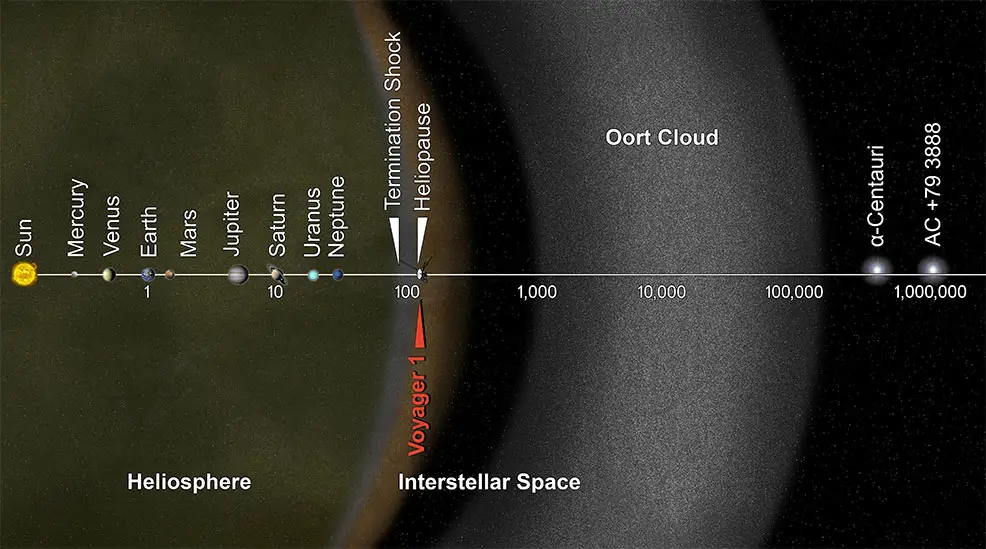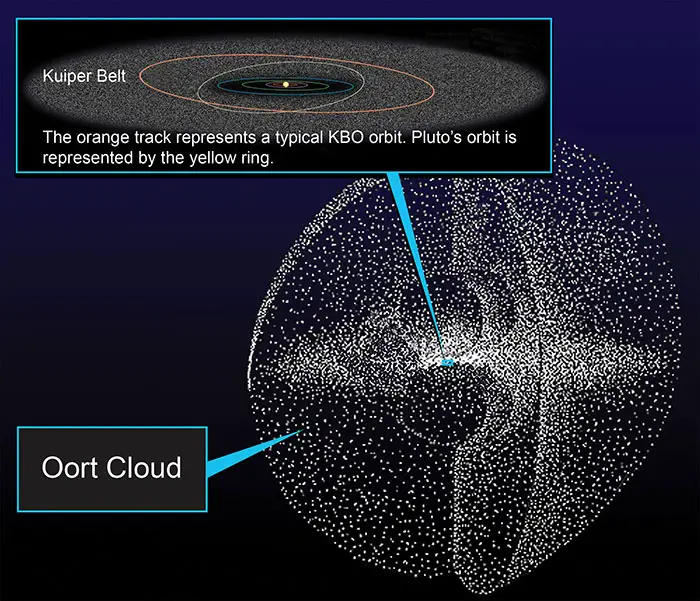
11th January 2019 Interstellar "precursor" mission could reach 1,000 AU by 2080 An international team of scientists, led by the Johns Hopkins Applied Physics Laboratory (APL) in Maryland, USA, is proposing a mission to the inner Oort cloud that would launch by 2030 and reach its destination within 50 years.
This future spacecraft would travel at six times the speed of NASA's Voyager 1, which crossed the heliopause and entered the interstellar medium in 2012. Reaching a distance of 1,000 astronomical units (AU), or 150 billion km (93 billion miles), it could use current or near-term technology, while driving the development of more advanced propulsion, communication and sensor systems (with implications for travel in our own Solar System as well). Dr. Ralph McNutt is a chief scientist at Johns Hopkins, a co-investigator on NASA's New Horizons and has worked on a wide range of other projects including two Voyager investigations. He was lead author of an influential paper, "Near-Term Interstellar Probe: First Step" presented at the most recent International Astronautical Congress held in Bremen, Germany. The abstract reads as follows:
"Overall, I think the study is progressing well and will provide some good and solid input for the next Decadal Survey round," said McNutt, who has worked at APL since 1992. The Decadal Surveys are 10-year plans outlining scientific missions and goals created by the U.S. National Academies, with input from scientists both in the U.S. and around the world. The next Astronomy and Astrophysics Decadal Survey is scheduled for 2020, while the Planetary Science Decadal Survey will cover the period 2023-2032.
We know very little about the Oort cloud, which lies far beyond even the remote Kuiper belt. A mission to its (estimated) inner edge could reveal clues as to its actual dimensions, how many objects are within it, how it formed and the interaction between it and the surrounding neighbourhood. Our present understanding of this dark and incredibly distant region is that it begins somewhere around 1,000 AU and extends to 200,000 AU (0.03 to 3.2 light years), forming a vast "shell" of icy debris surrounding the entire Solar System; remnants of the original protoplanetary disc that formed around the Sun approximately 4.6 billion years ago. For comparison, Proxima Centauri – the closest of three bodies that form the triple-star Alpha Centauri system – lies at 4.2 light years. Given that APL's proposed spacecraft would only scratch the inner surface of the Oort cloud, it should therefore be termed an "interstellar precursor" mission, according to Marc Millis, propulsion physicist and founder of the Tau Zero Foundation. "It is a reasonable candidate for the next deep-space mission," explains Millis. "It is not, however, a true interstellar mission. It is better referred to as an 'interstellar precursor' mission." Regardless of whether or not the probe enters interstellar space, reaching 1,000 AU would be an unprecedented feat of engineering and a major milestone in the history of space exploration, potentially paving the way for travel to exoplanets in the 22nd century. Recent years have seen increased talk of missions to extremely distant locations, such as Breakthrough Starshot and a solar gravity lens telescope at 548 AU. These ambitious, long-term concepts may become a reality within a human lifetime. "We learn by doing, and pushing well beyond the heliopause will teach us what to expect in the local interstellar medium, where future, faster missions will eventually explore inner Oort cloud objects like Sedna and push on into the Oort itself," said Paul Gilster, writer and editor of the website Centauri Dreams.
Comments »
If you enjoyed this article, please consider sharing it:
|








